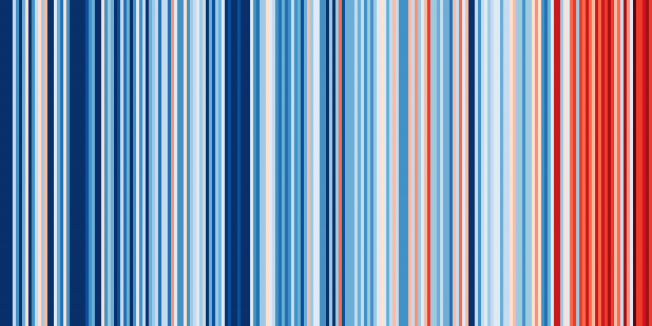Calibrating large-ensemble European climate projections using observational data
Earth System Dynamics Copernicus Publications 11:4 (2020) 1033-1049
Abstract:
This study examines methods of calibrating projections of future regional climate using large single model ensembles (the CESM Large Ensemble and MPI Grand Ensemble), applied over Europe. The three calibration methods tested here are more commonly used for initialised forecasts from weeks up to seasonal timescales. The calibration techniques are applied to ensemble climate projections, fitting seasonal ensemble data to observations over a reference period (1920–2016). The calibration methods were tested and verified using an imperfect model approach using the historical/RCP 8.5 simulations from the CMIP5 archive. All the calibration methods exhibit a similar performance, generally improving the out-of-sample projections in comparison to the uncalibrated (bias-corrected) ensemble. The calibration methods give results that are largely indistinguishable from one another, so the simplest of these methods, namely Homogeneous Gaussian Regression, is used for the subsequent analysis. An extension to this method – applying it to dynamically decomposed data (in which the underlying data is separated into dynamical and residual components) – is also tested. The verification indicates that this calibration method produces more reliable and accurate projections than the uncalibrated ensemble for future climate over Europe. The calibrated projections for temperature demonstrate a particular improvement, whereas the projections for changes in precipitation generally remain fairly unreliable. When the two large ensembles are calibrated using observational data, the climate projections for Europe are far more consistent between the two ensembles, with both projecting a reduction in warming but a general increase in the uncertainty of the projected changes.Calibrating large-ensemble European climate projections using observational data
Earth System Dynamics 11:4 (2020) 1033-1049
Abstract:
© Author(s) 2020. This work is distributed under This study examines methods of calibrating projections of future regional climate for the next 40–50 years using large single-model ensembles (the Community Earth System Model (CESM) Large Ensemble and Max Planck Institute (MPI) Grand Ensemble), applied over Europe. The three calibration methods tested here are more commonly used for initialised forecasts from weeks up to seasonal timescales. The calibration techniques are applied to ensemble climate projections, fitting seasonal ensemble data to observations over a reference period (1920–2016). The calibration methods were tested and verified using an “imperfect model” approach using the historical/representative concentration pathway 8.5 (RCP8.5) simulations from the Coupled Model Intercomparison Project 5 (CMIP5) archive. All the calibration methods exhibit a similar performance, generally improving the out-of-sample projections in comparison to the uncalibrated (bias-corrected) ensemble. The calibration methods give results that are largely indistinguishable from one another, so the simplest of these methods, namely homogeneous Gaussian regression (HGR), is used for the subsequent analysis. As an extension to the HGR calibration method it is applied to dynamically decomposed data, in which the underlying data are separated into dynamical and residual components (HGR-decomp). Based on the verification results obtained using the imperfect model approach, the HGR-decomp method is found to produce more reliable and accurate projections than the uncalibrated ensemble for future climate over Europe. The calibrated projections for temperature demonstrate a particular improvement, whereas the projections for changes in precipitation generally remain fairly unreliable. When the two large ensembles are calibrated using observational data, the climate projections for Europe are far more consistent between the two ensembles, with both projecting a reduction in warming but a general increase in the uncertainty of the projected changes.A Century in Hindcast: Building a Suitable Test for Seasonal Forecasts
Bulletin of the American Meteorological Society American Meteorological Society 101:11 (2020) 995-998
Constraining projections using decadal predictions
Geophysical Research Letters American Geophysical Union 47:18 (2020) e2020GL087900
Abstract:
There is increasing demand for robust, reliable and actionable climate information for the next 1 to 50 years. This is challenging for the scientific community as the longest initialized predictions are limited to 10 years (decadal predictions). Thus, to provide seamless information for the upcoming 50 years, information from decadal predictions and uninitialized projections need to be merged. In this study, the ability to obtain valuable climate information beyond decadal time-scales by constraining uninitialized projections using decadal predictions is assessed. The application of this framework to surface temperatures over the North Atlantic Subpolar Gyre region, shows that the constrained uninitialized sub-ensemble has higher skill compared to the overall projection ensemble also beyond ten years when information from decadal predictions is no longer available. Though showing the potential of such a constraining approach to obtain climate information for the near-term future, its utility depends on the added value of initialization.Assessing the robustness of multidecadal variability in Northern Hemisphere wintertime seasonal forecast skill
Quarterly Journal of the Royal Meteorological Society Wiley 146:733 (2020) qj.3890



